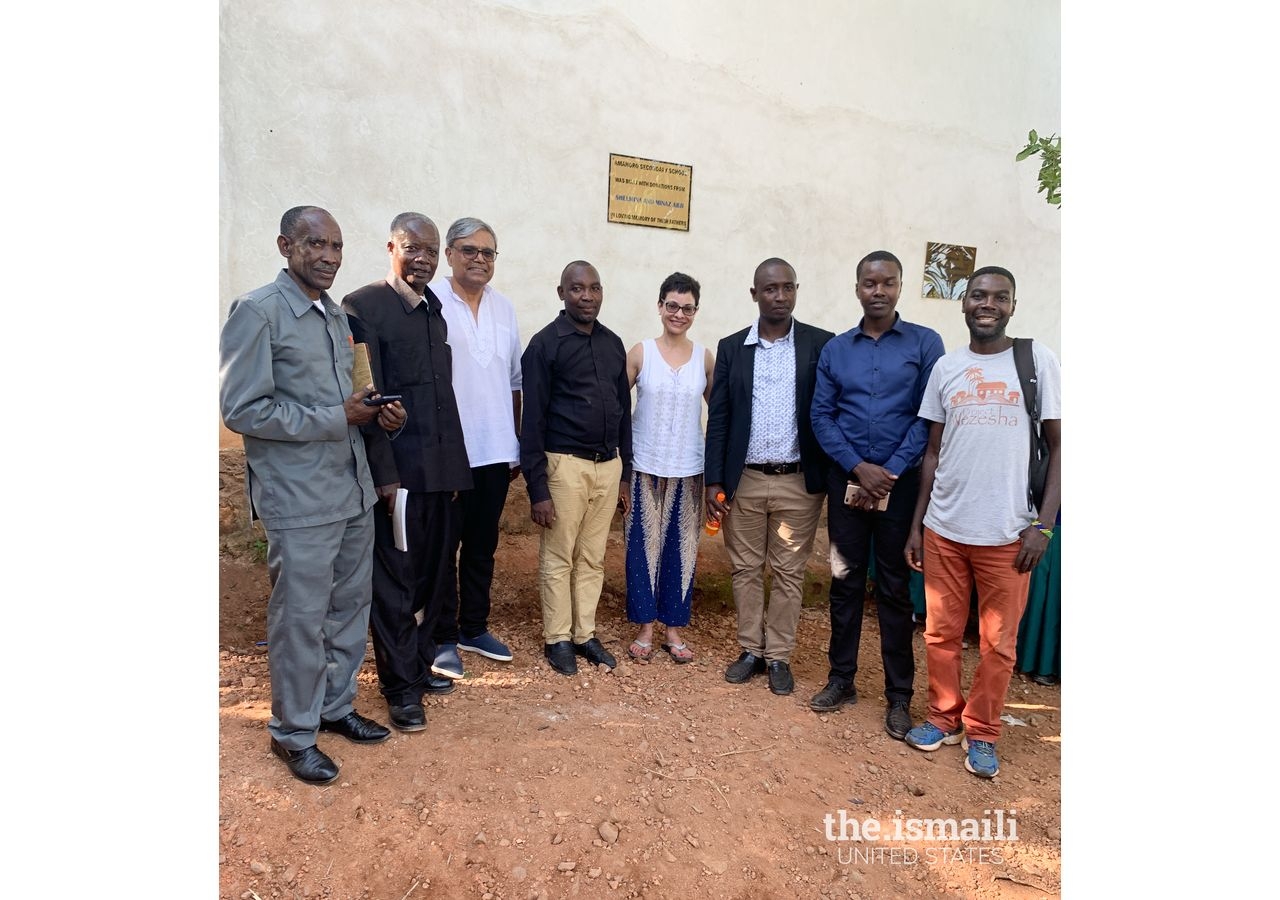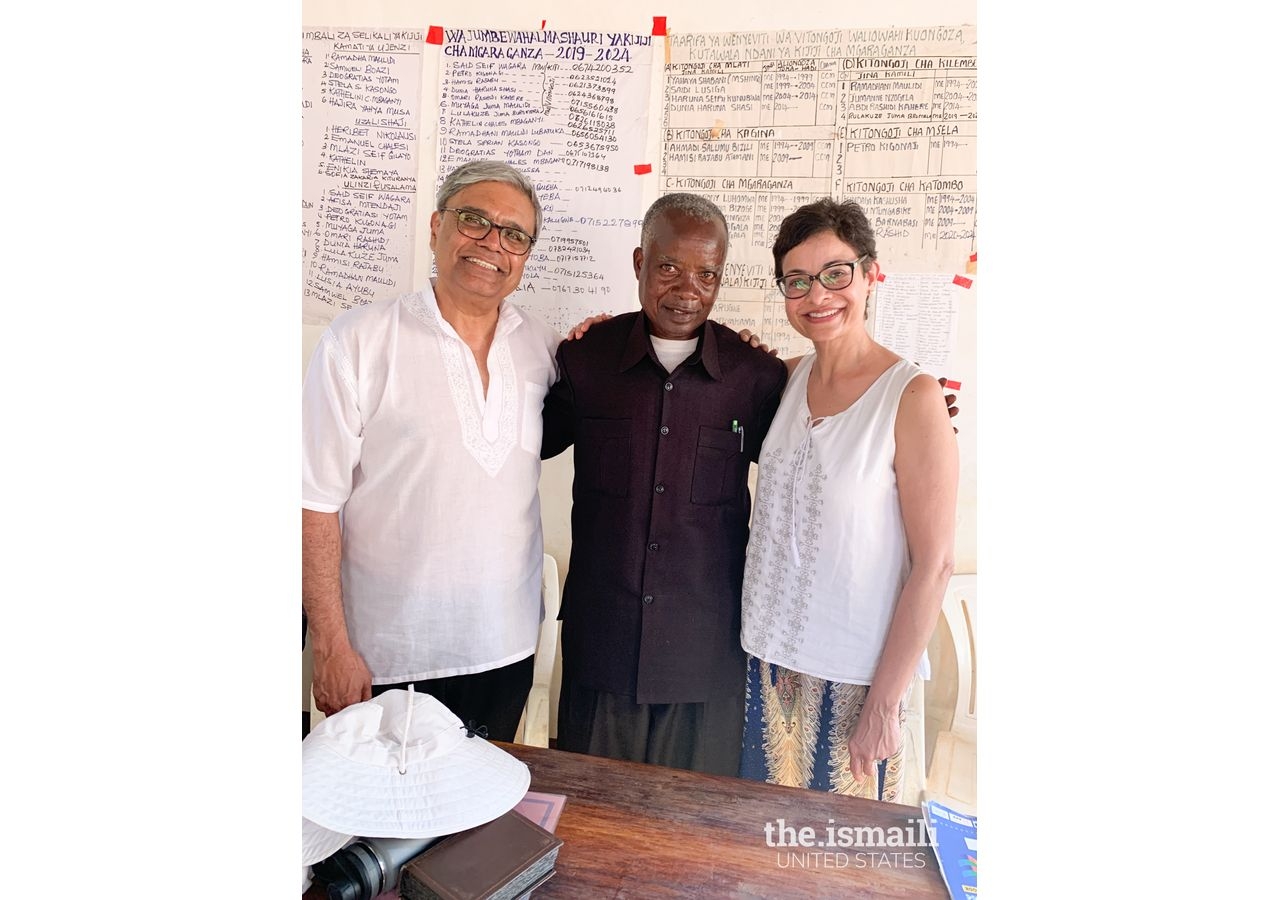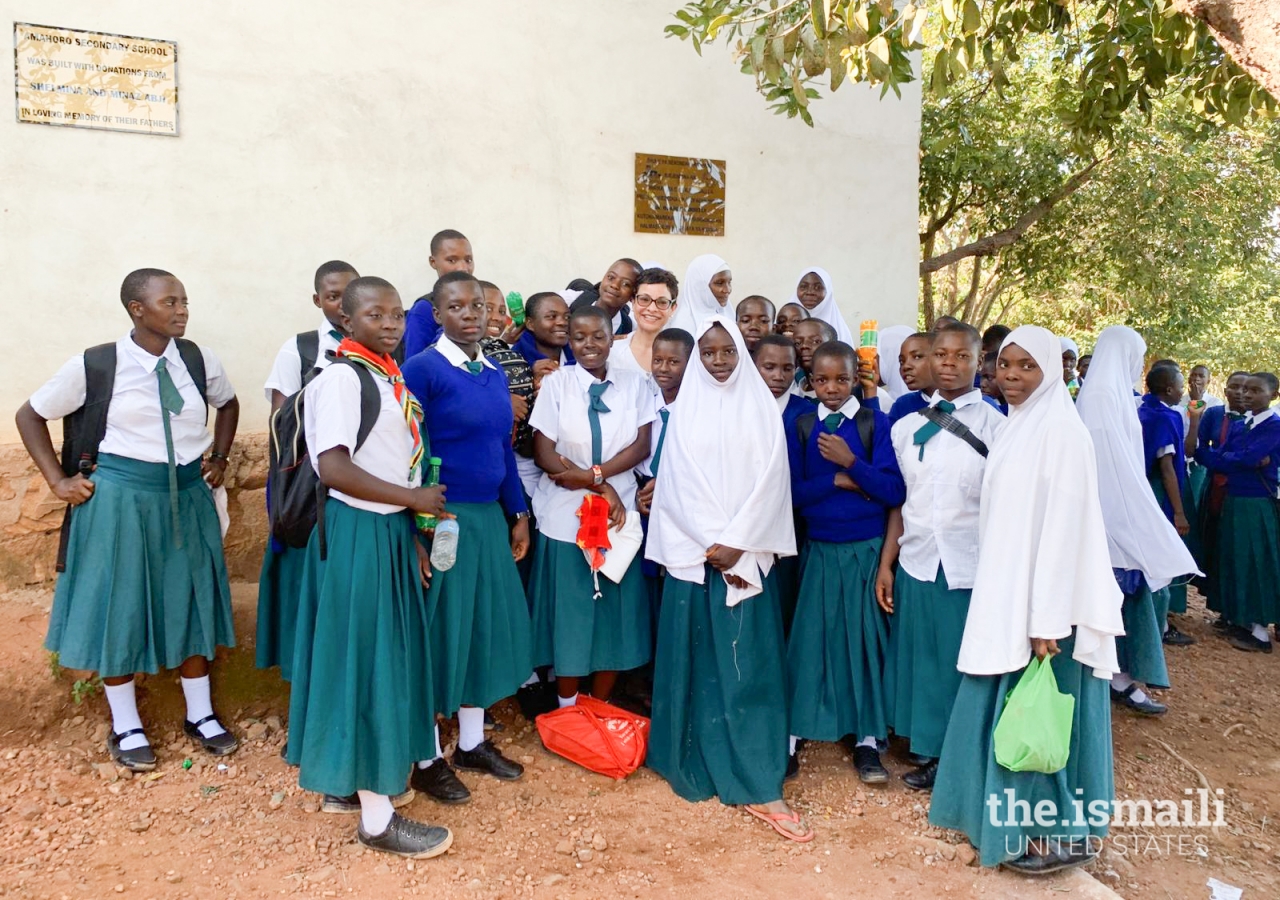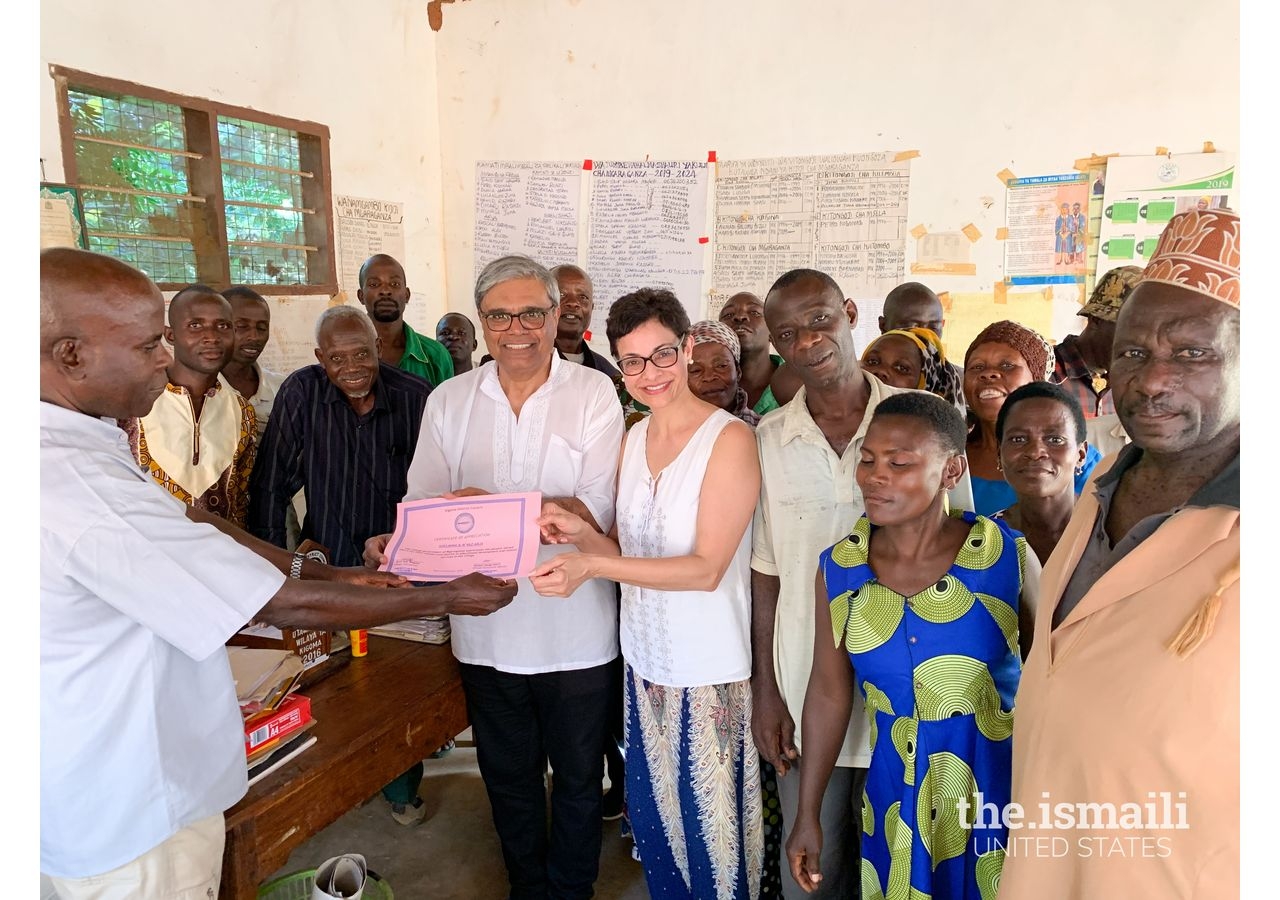“I wanted to provide access,” explains Shelmina Abji, on why she wanted to open a school in Tanzania. She recalls leaving her hometown of Mwanza, a city in northern Tanzania, at the age of 15, and the impact it had on her life to be the first in her family to receive higher education.
Children of Mgaraganza, a village in the Kigoma region of Tanzania, were traveling on foot to the nearest high school, three miles away. With oppressive rains and humidity, an overwhelming number of students dropped out of school, in particular female students, due to safety concerns.
“God used us as an instrument to exercise his will,” explain Seattle residents Shelmina and her husband Minaz, on having connected online with Ms. Rai Farrelly, a Master’s student living in Utah, who had worked in Tanzania for an NGO. She was aware of the lack of facilities in Mgaraganza, a rural area, and also wanted to build a school there, having collected $2,000 for this cause. Through an initiative entitled Project Wezesha – supported by Global Giving and in partnership with village leaders of Mgaraganza - Rai had established the necessary framework for the school but found the initiative was short of resources, needing $50,000 to complete the project.
After weeks of discussions, Shelmina and Minaz printed invitations for their upcoming wedding, suggesting that instead of gifts to the couple, guests donate towards the Amahoro Secondary School. The couple provided the gifts and added their own funds to complete the financing required for the school.
Rai had worked with Lucas Lameck, a local youth who had participated in meetings with the Village Chief about the school, and the village agreed to donate the land and labor to build the school. The school opened in 2012 for Form 1, and each year thereafter, another classroom was built and opened for the students moving up.
Shelmina refers to the “outsize impact” the school has had since having opened. The drop-out rate had been eliminated entirely, and children now walked five to fifteen minutes to get to school. Children from nearby villages were traveling to attend the new school and the number of classrooms and chairs was falling short. The first graduating class in 2018 comprised of nearly 130 students, with a total enrolment of 500 students at the school.
“Parents are now learning from the students. The decision-making ability of these students expands,” explains Shelmina. Minaz believes “the impact will be felt exponentially ten years from now when the children become adults in their communities.”
The initial contributions provided for 16 classrooms, furnished with desks and chairs for the increasing number of students. Minaz found it remarkable the lengths their contributions were taken. “The kind of impact we can have in these communities is outstanding. I was amazed at what they were able to achieve and the number of students they had.” Shelmina remarks that although there was much-needed work yet to be completed, the village and the students are grateful for the facilities.
“Driving in the car, we see students and they start singing and laughing,” says Minaz of their visit to the school in February 2020. “They were so appreciative. We were able to touch and see the impact.” The couple met with the students, the villagers who provided the necessary labor to construct the school, and Lucas – project manager for Project Wezesha and an integral part of Rai’s initiative.
Since their recent visit, Shelmina and Minaz have supplemented their initial contribution to the Amahoro School that will go towards building a sanitation room for female students, installing a larger water tank, completing an additional seven classrooms, providing for a new photocopy machine, and installing solar panels for electricity. The chief of the village stated, “we are changing the destiny of the village.”
Shelmina recalls the challenges in finding and partnering with the right organization to open a school in a rural part of Tanzania. Many organizations found it daunting to open a school where infrastructure was nonexistent, and where villages were not considered focus sites. She then reflects on the visit to the Amahoro Secondary School, and being greeted by the students, as being the happiest day of her life. “It’s all serendipity,” she says.
MInaz also wanted to make an impact on education in Uganda, where he was born. He partnered with IREAD, donating funds for the opening of an ECD in the Kanungu district in rural Uganda. IREAD’s mission is to develop Early Childhood Centers (ECD) in the developing world and has built ten in Uganda and eleven in Northern Pakistan. The centers in Uganda are certified and registered with the Ministry of Education and follow the national ECD curriculum. The centers in Pakistan are monitored by the Aga Khan Education Services and follow their curriculum.











